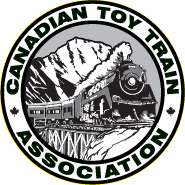Marklin’s Railway Accessories Figures Set, 2748G
By Frank Schmidt, CTTA
Published June 2016
This railway figures set first appeared in the 1934 – 35 Marklin catalogue (D11) as code 2748G (6 figures) for stations, etc.
It comprised a boxed set of 6 different ‘Elastolin’ figure pieces, with the height of each figure about 2 ¼ in or 6 cm. In this initial listing, there is no mention of the figures being made by Elastolin but they are definitely one of their models and marked as such underneath the footplate.
This boxed figure set was listed for sale by Marklin from 1934 (D11) to the 1939 (D16) end of pre-war production catalogue. There is no date stamp inside the set box to indicate year of manufacture or sale.
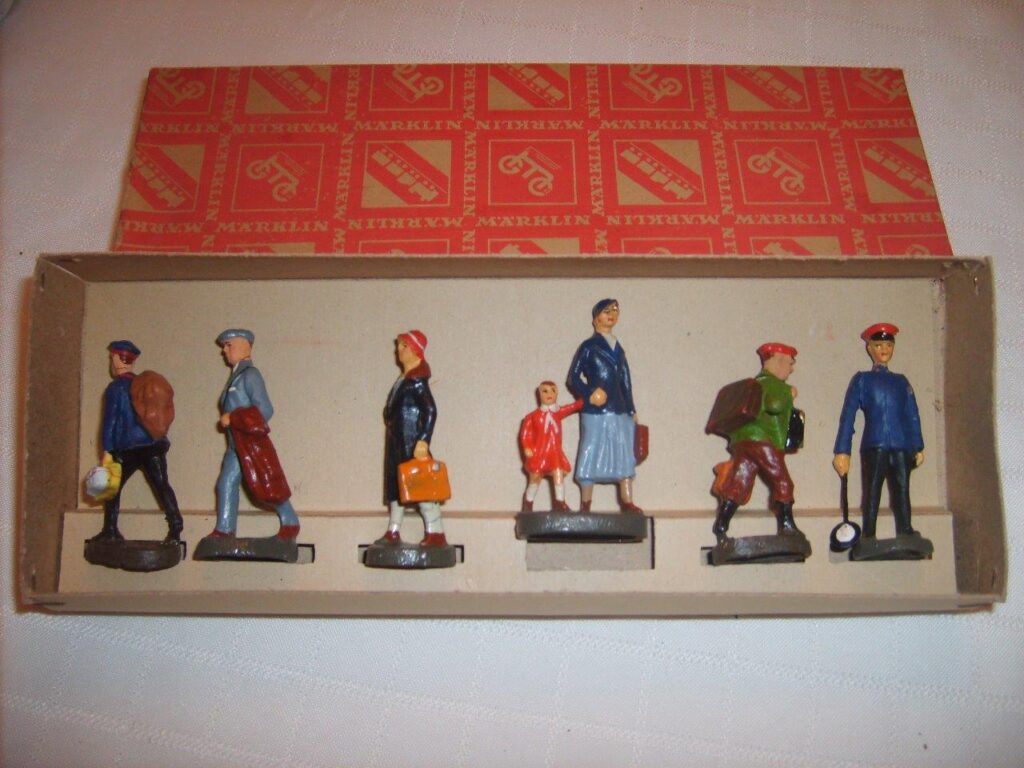
Marklin’s #2748 figures came in many assorted colours and shapes but were always catalogued in the same manner.
The 1934 catalogue has mostly colour illustrations for the 0 and 1 gauge locomotives and rolling stock, while these accessories are shown in black and white only. They are shown as an artist’s rendition and not actual photographs. All of the set illustrations from 1934 to 1939 have the same 6 figures, namely: red cap porter, business woman with satchel, a woman with small child in hand, workman with sack and bags, business man with coat over arm and station conductor with movable arm holding a signal. In the later catalogues of 1935 – 39, these figures are described as ‘Elastolin’.
The Marklin catalogues did not normally have a retail price attached, but the separate 6 page Price List for 1934 has a 1.50 RM or 1.50 US dollars for the 2748 box set. There was a 40% discount offered for a dealer price of 0.90 US cents, FOB New York City with duty and taxes included. Presumably the retail price would be $1.50 US for the set, a 40% profit margin.
Marklin’s #2728G accessory figures came in many assorted colours and shapes. Over the years, I have found six sets in their original box (all opened) and in a few cases with the original brown packing paper still inside.
The Boxes
For each of the sets, each set box is the same. The lid is a dull red, a beige colour word “Marklin” printed vertically and horizontally in a square. Alternating in each square is the Marklin bicycle of post war 1920 and a stylized train – locomotive, tender and two coaches.
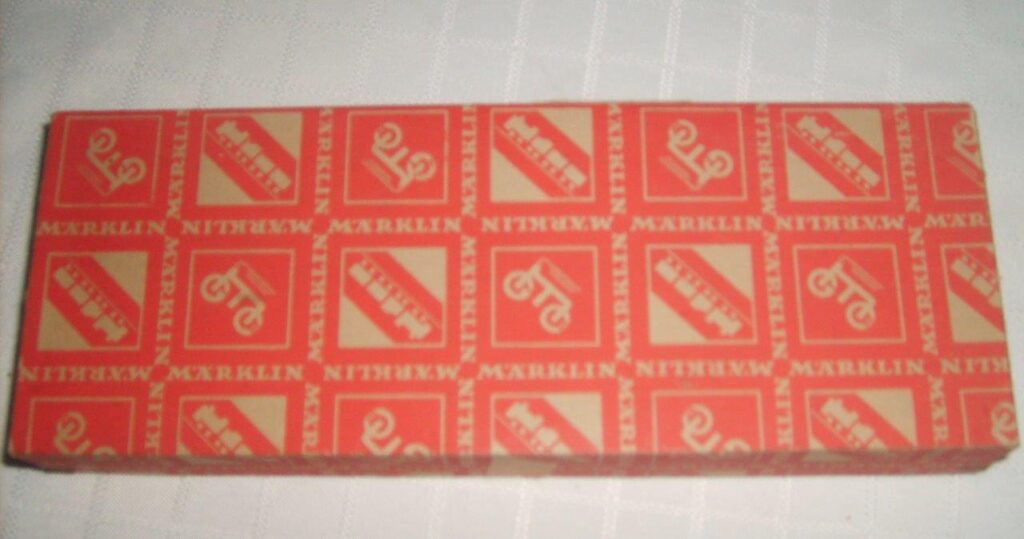
The contents label on each box is the same. Located at one end of the box, Marklin /2728G/6 /Made in Germany, is printed. On the same box end as the label, to the upper right hand corner, is a stencilled ink 3. The box lid corners are open cut and held closed at 90 degrees by a staple. The box bottom is a tan brown light cardboard also with open corners and held at the 90 degree angle with the same ‘crooked’ staple. The inside bottom of the box has a raised slotted section where the bases of the 6 figures firmly rest and then a beige lightweight paper packing is added to hold the figures securely in their place. Each set box has 2 tan tapes to seal the lid to the box bottom.
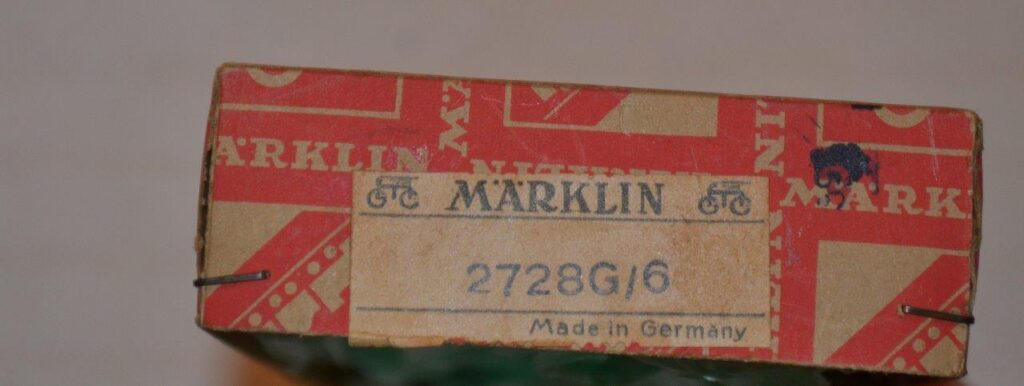
All of these boxed figures were made by Elastolin, a trademark of O M Hausser, another well known German toy figure firm of the era.
The Figures
These figures were sold with many Marklin trains of the late 1930’s as seated passengers, sleeping passengers, station or restaurant figures and the general public. The figures were made of a wood and glue sawdust mixture in a wire frame. The Elastolin figures were jobbed out from the factory to locals, usually women or young girls, who took them home to fully paint and decorate. Elastolin supplied the paint to offer some uniformity and the jobbers mixed the colours. Each jobber was usually responsible for certain figures sharing the same colour, unless there was a heavy demand at which time others were assigned to assist in filling the order.
After each batch was completed, they were returned to the factory for a close inspection and payment to the painter. Another batch of figures would be collected. This was another source of income for the local folks and offered the family some extra income. The nature of this work was tedious and I am sure a bit boring after a few hundred of the same figure was done.
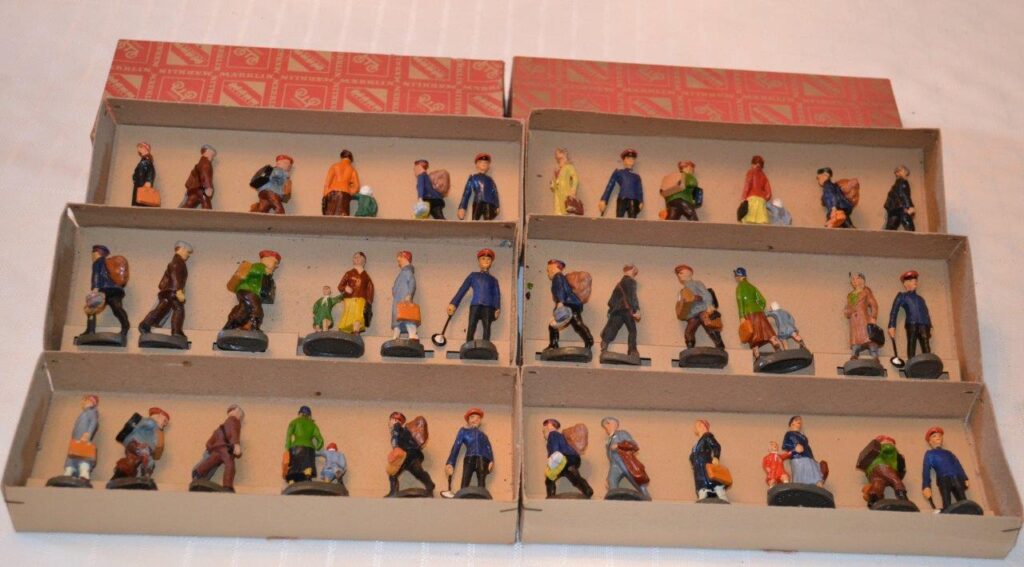
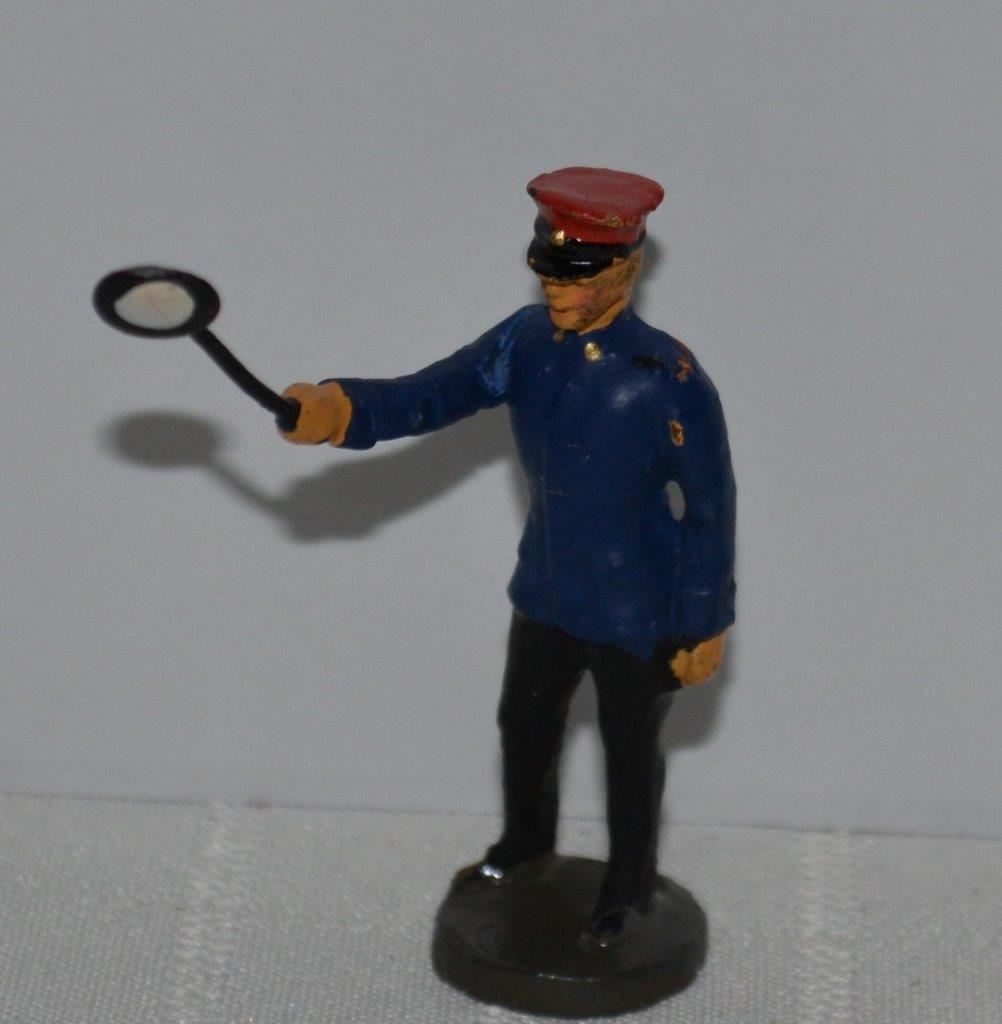
Let’s look at these figures individually for similarities and differences. Of the six figures represented for the 7 years of catalogue listing, 1934-1939, only the uniformed figure of the station man is 100% the same throughout with red cap, navy blue jacket, black pants and movable arm with signal stick.
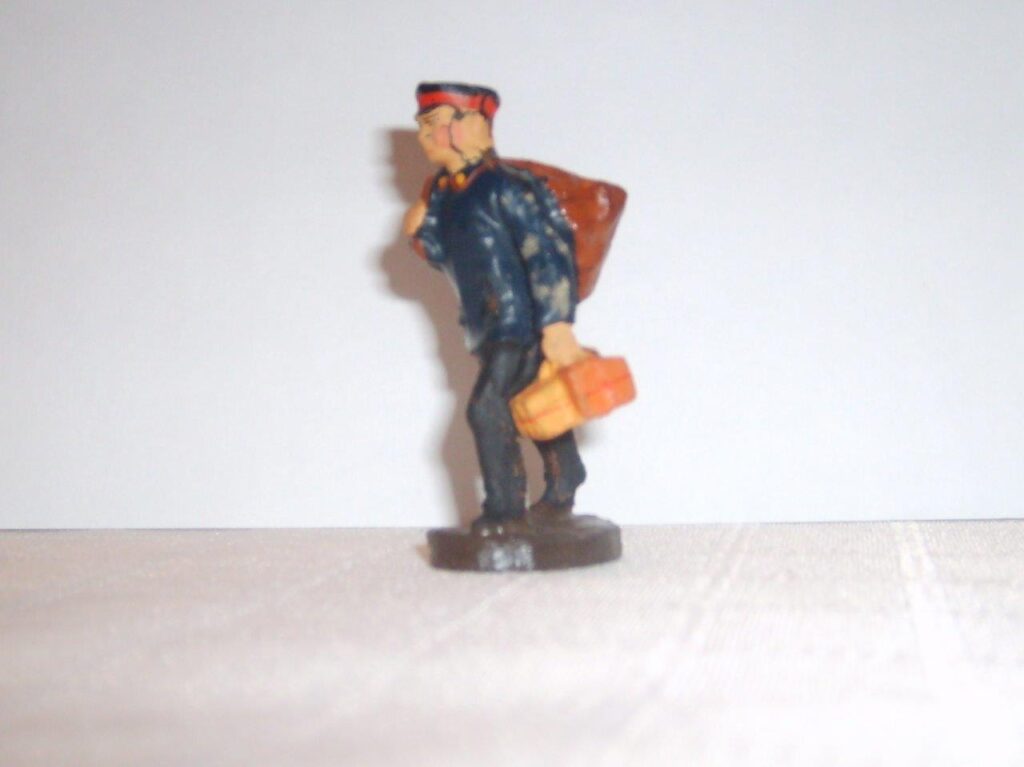
The station porter has the same uniform throughout – navy jacket, navy cap, black pants and brown shoulder bag. His only difference is the colour of the luggage bags in his hand.
The red cap porter changes his jacket colour between green and grey, pants from dark to light brown and suitcases from beige to black to brown. Only the red cap stays true to the colour code.
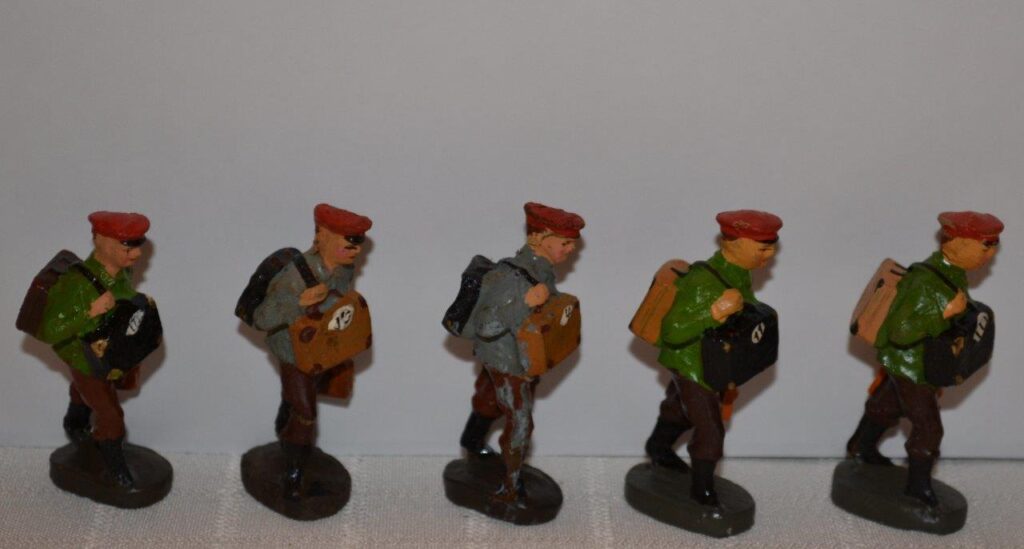
The businessman with overcoat over the arm changes his suit colours from navy to brown to grey while his overcoat goes from grey and brown in contrasting colour. Only his cap stays a grey colour.
The businesswoman with the briefcase wears a coat that is varied in colour, sometimes brown or grey or yellow or navy. The briefcase will be black or brown or orange to contrast with the colour of the coat. The clothing is quite stylish for a 1930’s businesswoman.
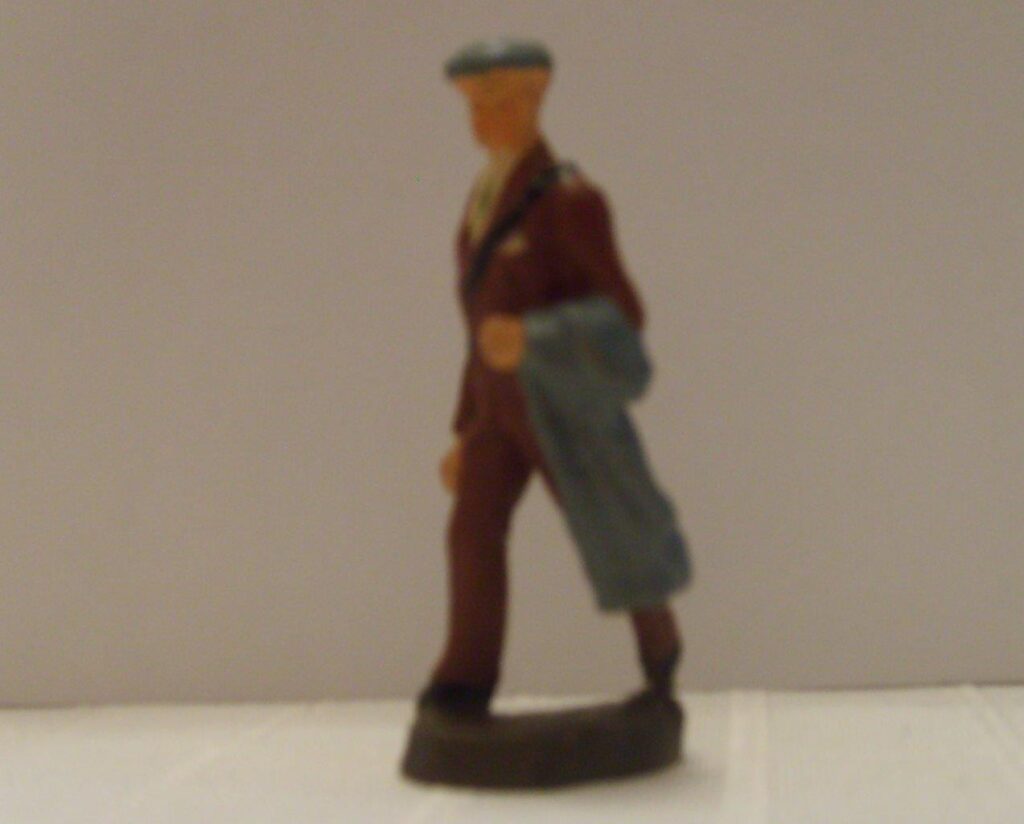
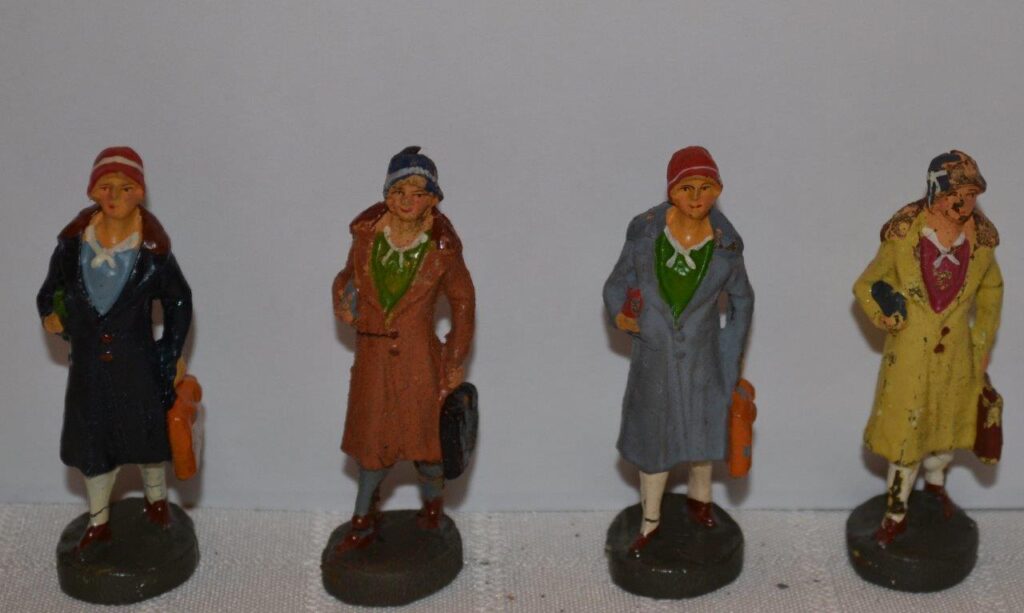
The last of the figures in the set is the woman with a child in hand. From her clothing, the child appears to be a girl. The woman’s outfit is the most varied and colourful with either a green jacket with a brown or black skirt, a navy jacket and grey skirt, a brown jacket with a dark yellow skirt, a red jacket with a light yellow skirt to finally an orange (tangerine) jacket and brown skirt. She has a different flashy outfit for each set or day, much like the women of today.
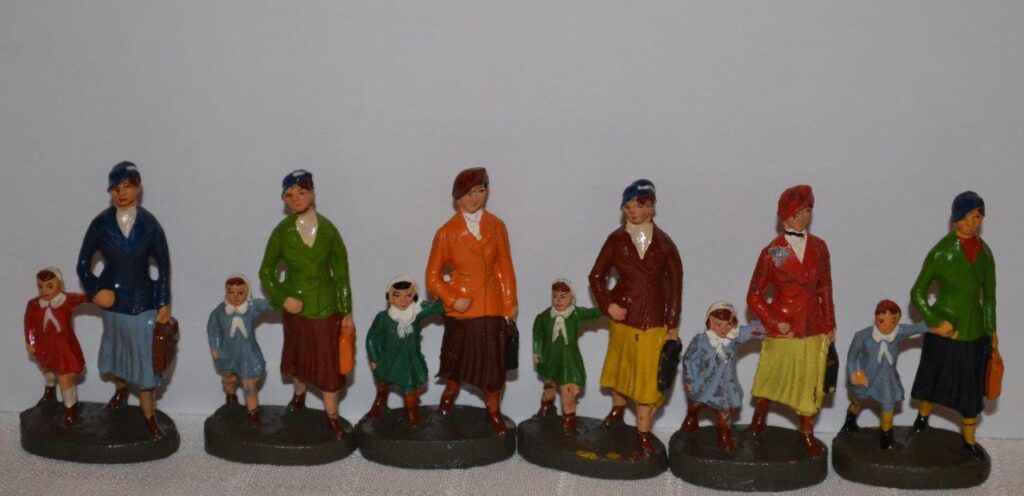
The young girl has 3 grey coats, a light and dark green one and finally a red coat. Her caps are mostly white with only one red cap. The person painting this figure made the most colour changes with her paint supply.
- Frank Schmidt
